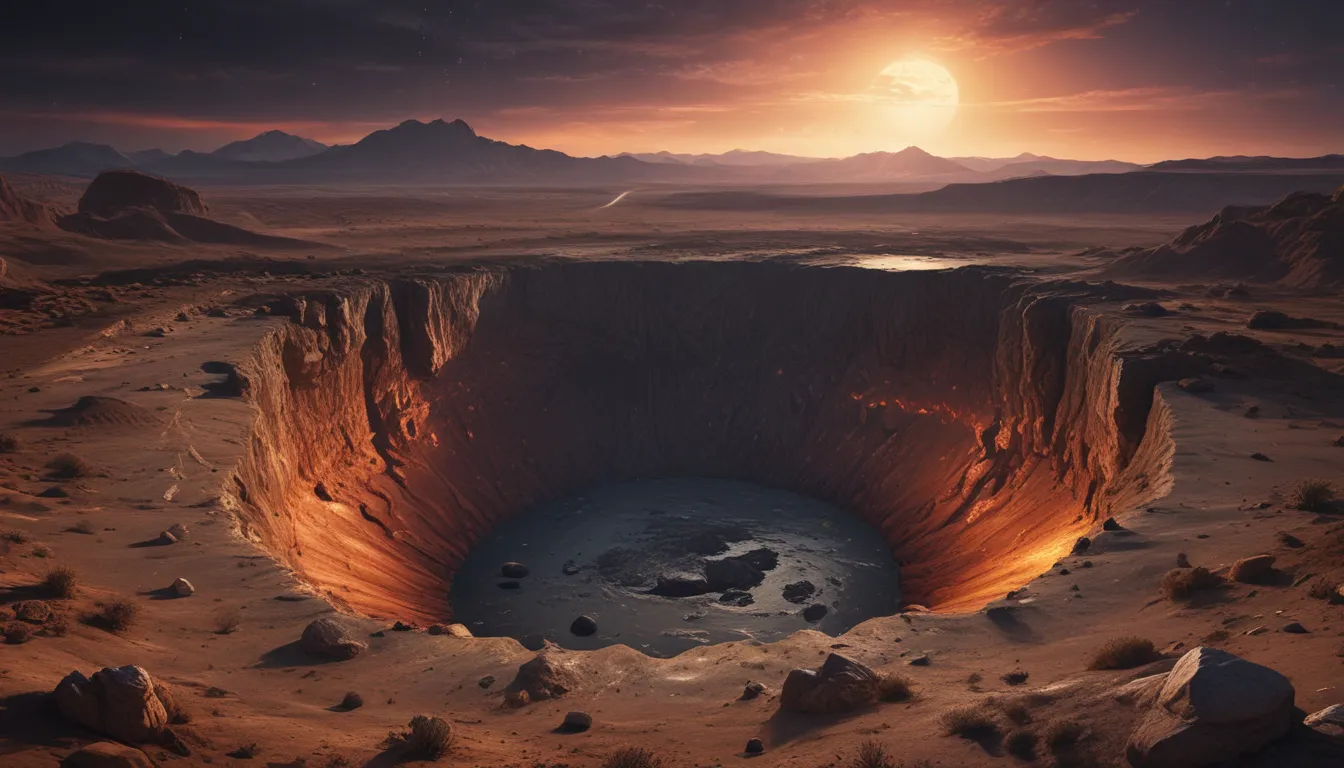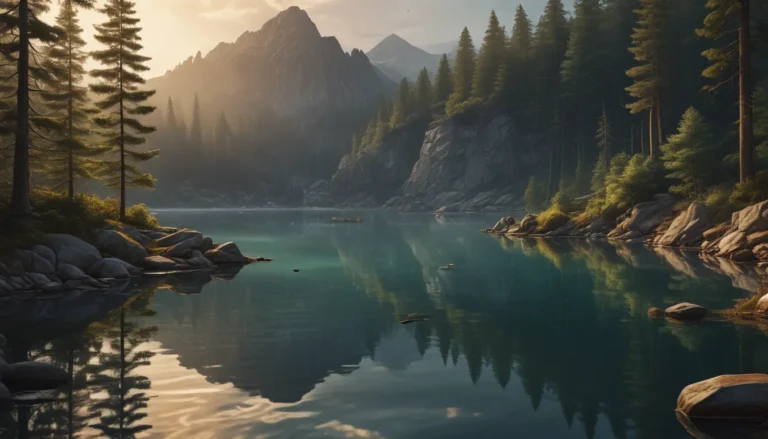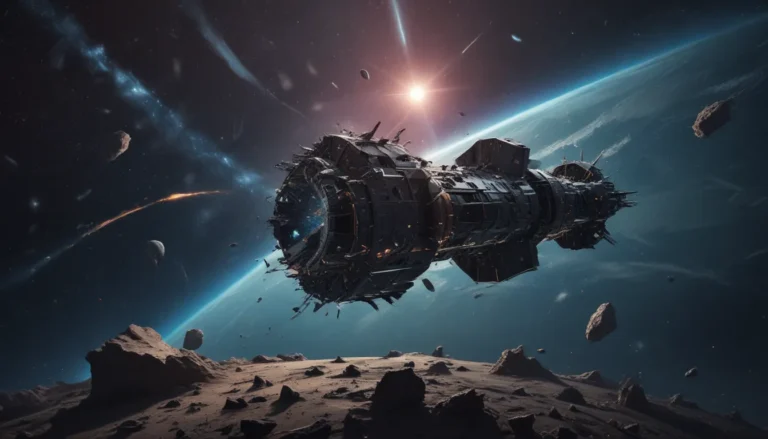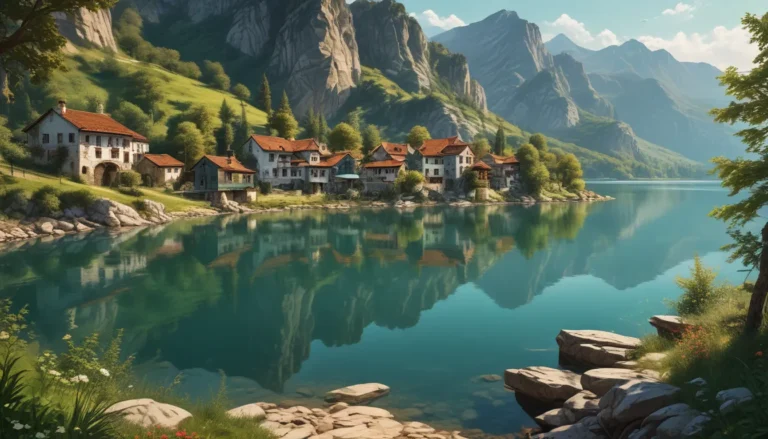The pictures we use in our articles might not show exactly what the words say. We choose these pictures to make you interested in reading more. The pictures work together with the words but don’t take their place. The words still tell you the important facts.
Are you ready to embark on a journey through the cosmos to uncover the hidden wonders of planetary impact craters that will leave you in awe? From the secrets of the largest impact structures to the fascinating geological formations they create, get ready to be amazed by the incredible power of these cosmic scars.
Exploring the Marvels of Planetary Impact Craters
Planetary impact craters are massive depressions on celestial bodies like moons and planets, showcasing the extraordinary forces at play in our cosmic neighborhood. Let's delve into 11 unbelievable facts about these impact structures that reveal the rich history and mysteries of our solar system.
Key Insights into Planetary Impact Craters
- Insight 1: Planetary impact craters offer valuable insights into the history of our solar system and hold potential resources for future space exploration missions.
- Insight 2: Studying impact craters helps scientists understand past extinction events, climate changes, and prepares us for potential asteroid impacts on Earth.
Unveiling the Formation of Impact Craters
When a high-speed collision occurs between a celestial object, such as an asteroid or comet, and a planet or moon, it creates a large crater. This impact can cause significant destruction and alter the geological features of the planetary surface.
The Largest Known Impact Crater on Earth
The Vredefort Crater in South Africa holds the title of the largest known impact crater on Earth, boasting a diameter of approximately 300 kilometers. This crater, formed over two billion years ago, now stands as a UNESCO World Heritage Site, showcasing the impressive remnants of a cosmic collision.
Insights from Planetary Impact Craters
Studying the characteristics of impact craters provides scientists with valuable insights into the age and composition of celestial bodies. The layers of debris and minerals found within these craters offer clues about the formation and evolution of our solar system, unlocking the mysteries of planetary history.
Impact Craters Beyond Earth
Planetary impact craters are not unique to Earth, as they can be found on other planets and moons. Mars, the Moon, Mercury, and even some of Saturn's moons bear the scars of past collisions, offering scientists a glimpse into the geological histories of these celestial bodies.
The Impact of Chicxulub Crater on Earth’s History
The Chicxulub crater in Mexico, measuring approximately 180 kilometers in diameter, is associated with the mass extinction event that occurred 66 million years ago. This catastrophic asteroid impact is believed to have led to the extinction of dinosaurs, reshaping the course of life on Earth.
Discovering Hidden Water Reserves in Impact Craters
Recent studies have revealed that certain impact craters may hold hidden water reserves beneath their surfaces. These reserves could be vital resources for future space exploration missions, offering new possibilities for sustaining life beyond Earth.
Geological Formations Within Impact Craters
The force of impact during collisions can create intricate geological formations within and around the craters, including central peaks, terraced walls, and concentric rings. These formations highlight the immense power unleashed during cosmic collisions, shaping the landscapes of celestial bodies.
Preserving Evidence of Past Atmospheres
The layers of material within impact craters serve as crucial archives for reconstructing past atmospheric conditions on planets and moons. By analyzing the composition of these layers, scientists can gain insights into the ancient atmospheres that once enveloped these celestial bodies.
Famous Impact Site: Barringer Crater in the United States
The Barringer Crater, or Meteor Crater, located in Arizona, USA, is one of the best-preserved impact craters on Earth and is estimated to be around 50,000 years old. This iconic crater stands as a testament to the violent history of cosmic collisions on our planet.
Impact Craters and Climate Influence
Large celestial impacts can release significant amounts of debris into the atmosphere, potentially blocking sunlight and causing temporary cooling effects on the climate. Understanding the impact of these events on climate can provide insights into environmental changes triggered by cosmic collisions.
Preparedness for Potential Asteroid Impacts
Studying impact processes and characteristics of impact craters enables scientists to assess the risks associated with potential asteroid impacts on Earth. This knowledge is essential for developing strategies to mitigate the effects of such events and safeguarding our planet's future.
Unveiling the Wonders of Planetary Impact Craters
In conclusion, planetary impact craters stand as remarkable features that offer profound insights into the history and evolution of our solar system. These cosmic scars, formed by powerful collisions, shape the landscapes of planets and moons, providing a window into the dynamic processes that shape our universe.
As we unravel the mysteries of planetary impact craters, we gain a deeper understanding of the cosmic forces that govern our celestial neighborhood. Each crater tells a unique story, revealing the incredible diversity and wonders that exist beyond our own planet. By exploring these extraterrestrial marvels, we journey closer to understanding the vast intricacies of the universe around us.
FAQs: Exploring Further into Planetary Impact Craters
- How are planetary impact craters formed?
-
Planetary impact craters are formed when celestial objects collide with the surface of a planet or moon, generating immense shockwaves that excavate circular or bowl-shaped depressions.
-
What is the largest known planetary impact crater?
-
The South Pole-Aitken Basin on the moon holds the title of the largest known planetary impact crater in our solar system, with a diameter of approximately 2,500 kilometers.
-
Are impact craters present on planets other than Earth and the Moon?
-
Impact craters can be found on various celestial bodies, including Mars, Venus, Mercury, and the moons of Jupiter and Saturn, reflecting the violent history of our solar system.
-
Do impact craters have scientific significance?
-
Impact craters provide crucial insights into the geological history and processes of other planets. Studying these craters helps scientists understand cosmic collisions' frequency and effects, impacting Earth's safety from similar events.
-
Could planetary impact craters harbor life?
- While impact craters may not be ideal habitats for life due to harsh conditions, they can preserve valuable biological and geological information. Some Earth impact craters have revealed unique microbial life forms, hinting at life's resilience in extreme environments.
Reflecting on the Wonders of Planetary Impact Craters
Unraveling the mysteries of planetary impact craters unveils the awe-inspiring forces that shape celestial bodies in our solar system. Each crater holds a unique story, offering glimpses into the cosmic collisions that sculpted our planets and moons. From hidden water reserves to intricate geological formations, these impact structures reveal the astounding diversity and wonders of the universe waiting to be explored and understood.
Stay curious, keep exploring, and let the marvels of planetary impact craters inspire your journey through the cosmos.
Was this page helpful?
Our dedication to delivering trusted and engaging content drives our mission to provide valuable insights and information to our readers. Every fact shared on our site is contributed by individuals like you, ensuring a diverse range of perspectives and knowledge. Our committed editors rigorously review each submission to guarantee accuracy and credibility, fostering a space where fascinating discoveries meet authenticity. Trust in our pursuit of quality and authenticity as we navigate the wonders of the universe together.






